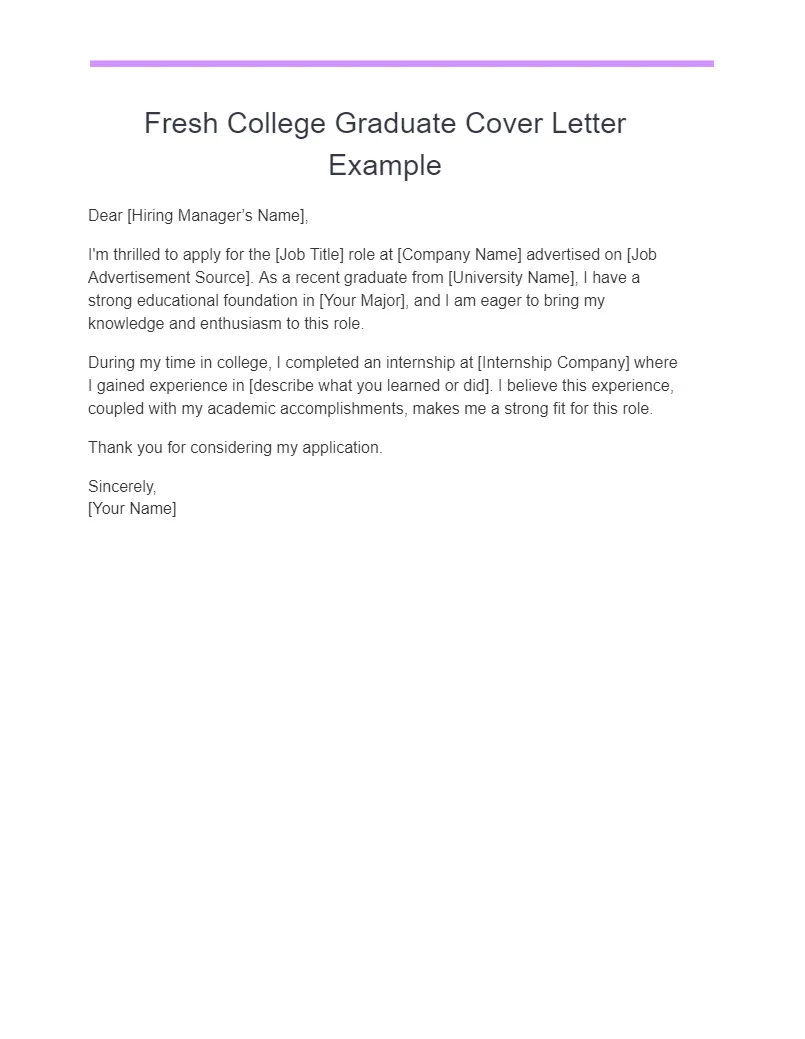Crafting a Compelling Cover Letter for Graduates
A cover letter is your first impression on a potential employer, a crucial element in your job application. For graduates, it’s an opportunity to showcase your potential, passion, and suitability for the role. Unlike experienced professionals who have years of work history to rely on, graduates often need to highlight their academic achievements, extracurricular activities, and transferable skills to stand out. This guide will equip you with the knowledge and tools necessary to create a cover letter that impresses hiring managers and lands you your dream job. Mastering this skill is vital for launching your career successfully, helping you navigate the competitive job market with confidence and competence. Understanding the nuances of cover letter writing can significantly improve your chances of getting interviews and securing employment.
Understanding the Purpose of a Graduate Cover Letter
The primary purpose of a graduate cover letter is to introduce you to the employer and explain why you’re a strong candidate for the specific position. It goes beyond the information in your resume by providing context, demonstrating your personality, and expressing your enthusiasm. The cover letter is where you can connect your skills and experiences to the job requirements, highlighting your unique value proposition. It’s your chance to show that you’ve researched the company, understand their needs, and are genuinely interested in contributing to their success. This personalized approach is what sets a great cover letter apart from a generic one. Moreover, it demonstrates your communication skills and attention to detail, which are vital in most professional roles.
Highlighting Your Skills and Achievements
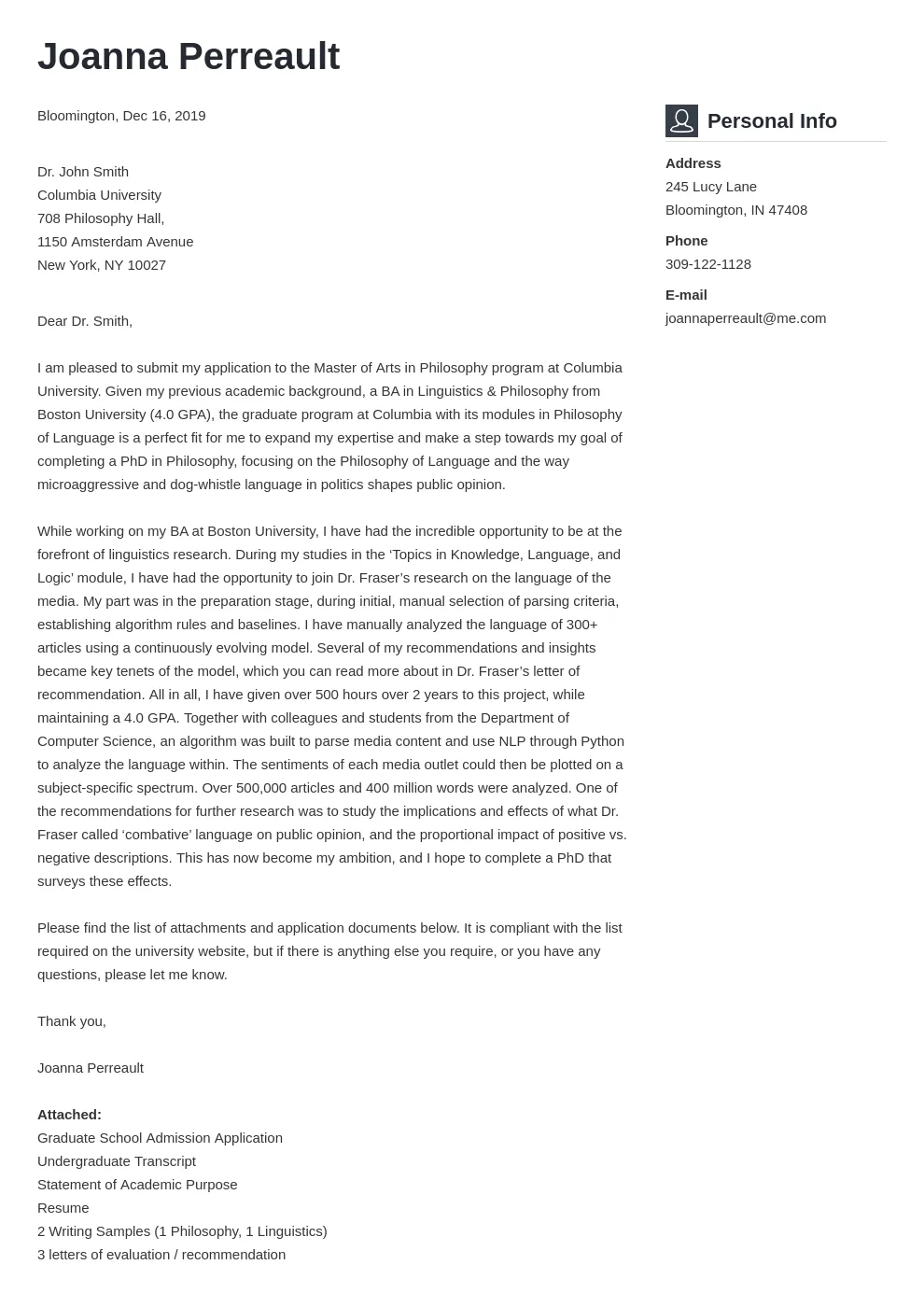
Focusing on your skills and achievements is critical for graduates. Since you may have limited work experience, emphasize your academic accomplishments, projects, and relevant coursework. Showcase any internships, volunteer work, or extracurricular activities that demonstrate your abilities. Identify transferable skills such as communication, teamwork, problem-solving, and leadership, and provide examples of how you’ve used them in the past. When describing your achievements, use the STAR method (Situation, Task, Action, Result) to provide concrete examples. This approach helps employers understand the impact you made. For instance, if you led a university project, describe the situation, your task, the actions you took, and the positive results achieved. This demonstrates your ability to deliver results, which is highly valued by employers.
Tailoring Your Cover Letter to the Job
A generic cover letter is a surefire way to end up in the rejection pile. Customize each cover letter to match the specific job description. Review the job posting carefully and identify the key skills and qualifications the employer is seeking. Then, use your cover letter to demonstrate how your skills and experiences align with those requirements. Use keywords from the job description in your cover letter, but do so naturally, avoiding keyword stuffing. Show that you understand the company’s values, mission, and the challenges they face. This level of personalization shows that you’ve done your homework and are genuinely interested in the role. Additionally, it makes it easier for the hiring manager to see how you’d be a good fit for the team and the company culture.
Key Components of a Winning Graduate Cover Letter
Contact Information and Professional Salutation
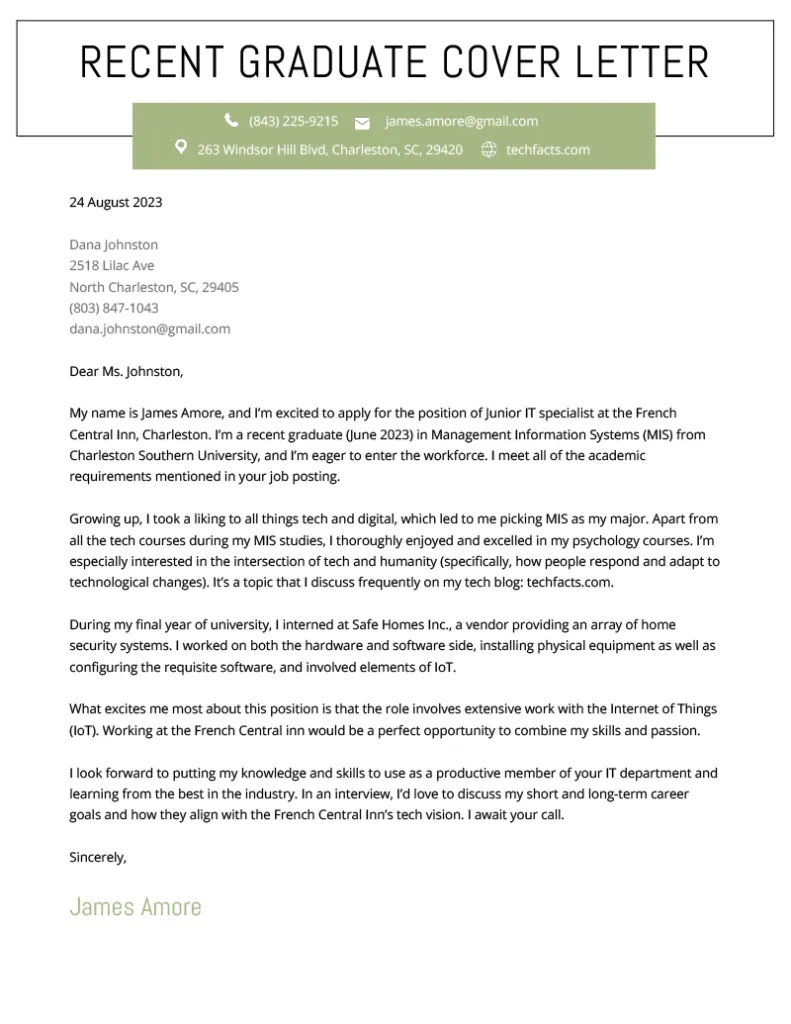
Start with your contact information, including your name, phone number, email address, and optionally, your LinkedIn profile URL. Use a professional and easy-to-read font. The salutation should be formal and appropriate. If you know the hiring manager’s name, use ‘Dear Mr./Ms. [Last Name]’. If you don’t know the name, use a professional greeting like ‘Dear Hiring Manager’ or ‘Dear [Department Name] Team’. Ensure your email address is professional and uses your full name or initials; avoid nicknames or unprofessional email addresses. Proper formatting and a professional tone from the start make a positive impression.
Writing a Strong Opening Paragraph
The opening paragraph is your first chance to grab the hiring manager’s attention. State the position you’re applying for and where you found the job posting. Briefly mention something that sparked your interest in the company or the role. Clearly state why you are applying and what makes you a good fit. This section should be concise and engaging, immediately highlighting your key qualifications and showing your genuine interest in the position. Aim to make it specific rather than general, and avoid clichés like ‘I am writing to express my interest…’. A strong opening sets the tone for the entire cover letter and encourages the reader to continue. A well-crafted opening paragraph is essential for capturing the reader’s attention right away.
Showcasing Relevant Skills and Experience
In the body of your cover letter, provide specific examples of your skills and experiences. Connect your qualifications to the job requirements by highlighting relevant skills and accomplishments. Use action verbs to describe your responsibilities and achievements. For example, instead of saying ‘Responsible for project management,’ say ‘Managed and successfully delivered three projects, resulting in a 15% increase in efficiency.’ Describe projects you’ve worked on, courses you’ve taken, or extracurricular activities that demonstrate your abilities. Make sure each example is relevant to the job you’re applying for and provides a clear understanding of your capabilities. Quantify your accomplishments whenever possible to demonstrate your impact and value.
Quantifying Accomplishments for Impact
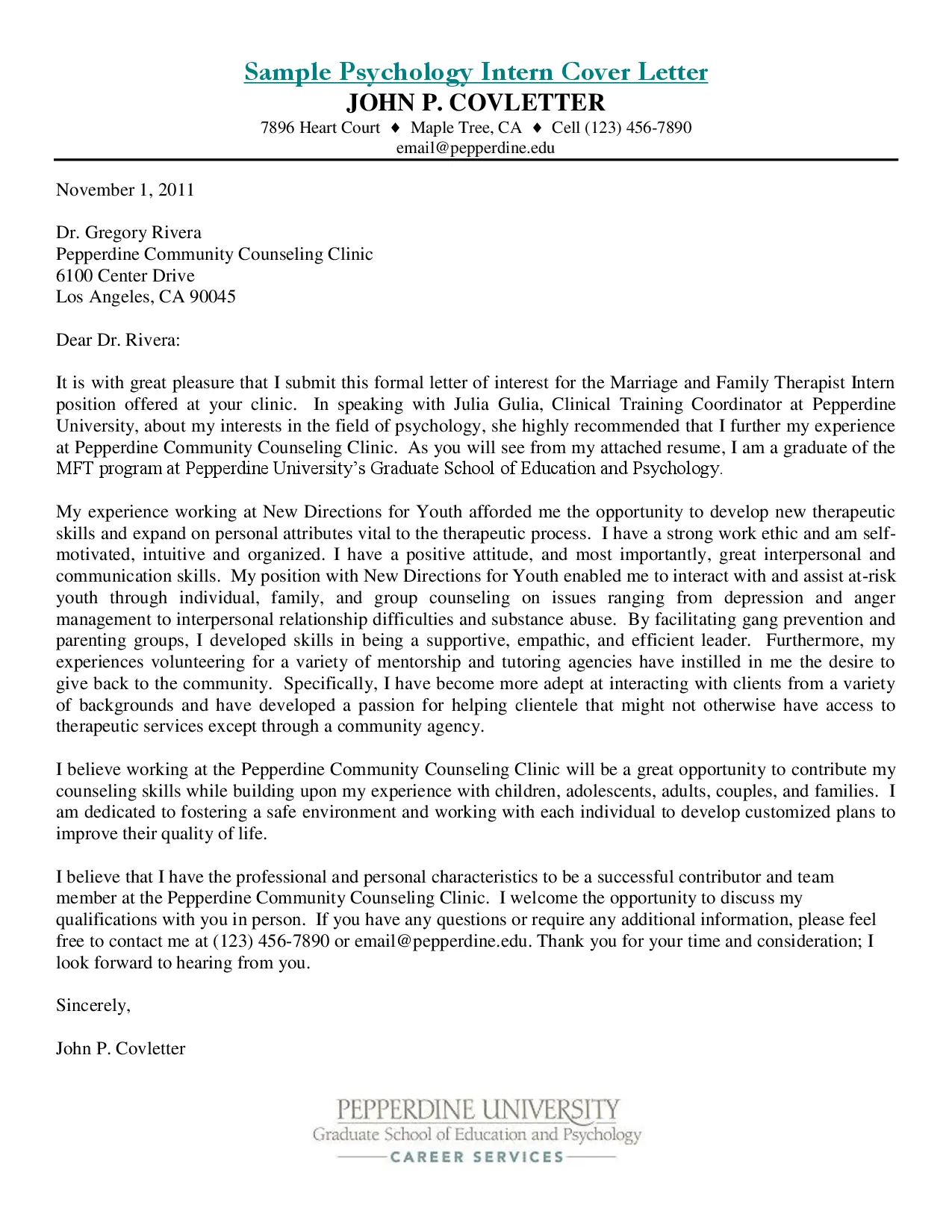
Whenever possible, quantify your achievements. Use numbers, percentages, and data to provide concrete evidence of your impact. Instead of saying ‘Improved customer satisfaction,’ say ‘Increased customer satisfaction scores by 20%’. Providing quantifiable results makes your accomplishments more compelling and demonstrates your ability to deliver measurable results. For example, if you led a team project, mention the size of the team, the project’s goals, and the outcomes achieved, such as increased sales, reduced costs, or improved efficiency. This level of detail showcases your ability to achieve tangible results and adds significant value to your application.
Addressing Any Gaps in Your Resume
If there are any gaps in your resume, such as a period of unemployment or a lack of relevant experience, address them proactively. Explain the situation briefly and honestly, focusing on what you’ve learned or how you’ve used the time. For instance, if you took a gap year, explain how you used that time to travel, volunteer, or develop new skills. If you’re switching careers, highlight the transferable skills from your previous experience. Reassure the employer that you are committed and prepared for the job. Framing any potential weaknesses positively and demonstrating how you have grown from them makes a positive impact, showcasing your resilience and ability to adapt.
Expressing Enthusiasm and Interest
Throughout your cover letter, express your enthusiasm for the role and the company. Show that you’ve researched the company and understand their mission, values, and products or services. Explain why you’re interested in the specific role and what excites you about the opportunity. Demonstrate how your skills and experiences align with the company’s needs and how you can contribute to their success. Showing your enthusiasm makes you more memorable and suggests that you are genuinely interested in joining the company. This can be as simple as mentioning a recent company achievement you admire or stating your alignment with their core values.
Concluding with a Call to Action
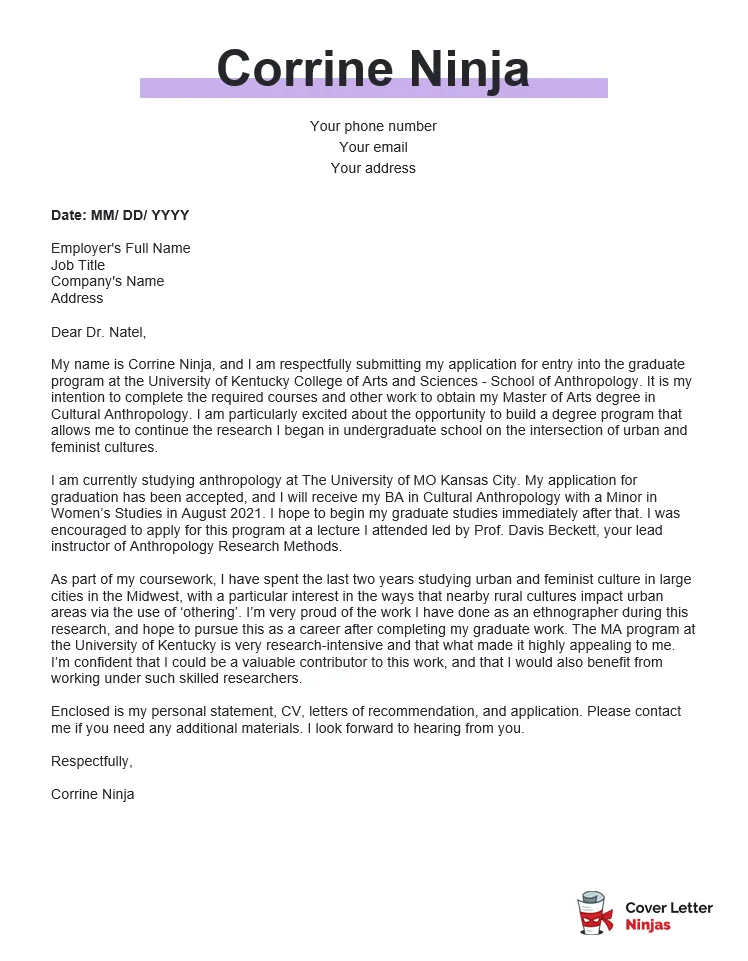
End your cover letter with a clear call to action. Thank the hiring manager for their time and consideration. Reiterate your interest in the position and express your eagerness to discuss your qualifications further. Provide your contact information again and mention that you are available for an interview. A strong call to action encourages the hiring manager to take the next step and move your application forward. This final touch reinforces your enthusiasm and makes it easier for them to respond. Always sign off with a professional closing, such as ‘Sincerely’ or ‘Best regards’.
Formatting and Proofreading Your Cover Letter
Formatting and proofreading are crucial steps to ensure your cover letter looks professional and error-free. A well-formatted and error-free cover letter demonstrates attention to detail and professionalism. Use a clean, easy-to-read font like Times New Roman, Arial, or Calibri, and maintain consistent formatting throughout the document. Avoid using excessive colors, bolding, or italics, and keep the letter concise, ideally one page. Ensure your cover letter is free of typos, grammatical errors, and inconsistencies. Proofread your letter multiple times and consider asking a friend or career counselor to review it as well. A polished cover letter significantly increases your chances of making a positive impression.
Formatting Best Practices
Use a professional font and size (e.g., 11 or 12-point font). Ensure consistent spacing and margins (typically 1 inch). Keep your letter to one page. Use clear headings and paragraphs to break up the text and make it easier to read. Properly align your text (typically left-aligned). Ensure the overall layout is clean and uncluttered. A well-formatted cover letter is easy to read and enhances your professionalism. It demonstrates that you pay attention to detail and take pride in your work. This is especially important for graduates, as it highlights your ability to create a polished, professional document.
Proofreading and Editing Techniques
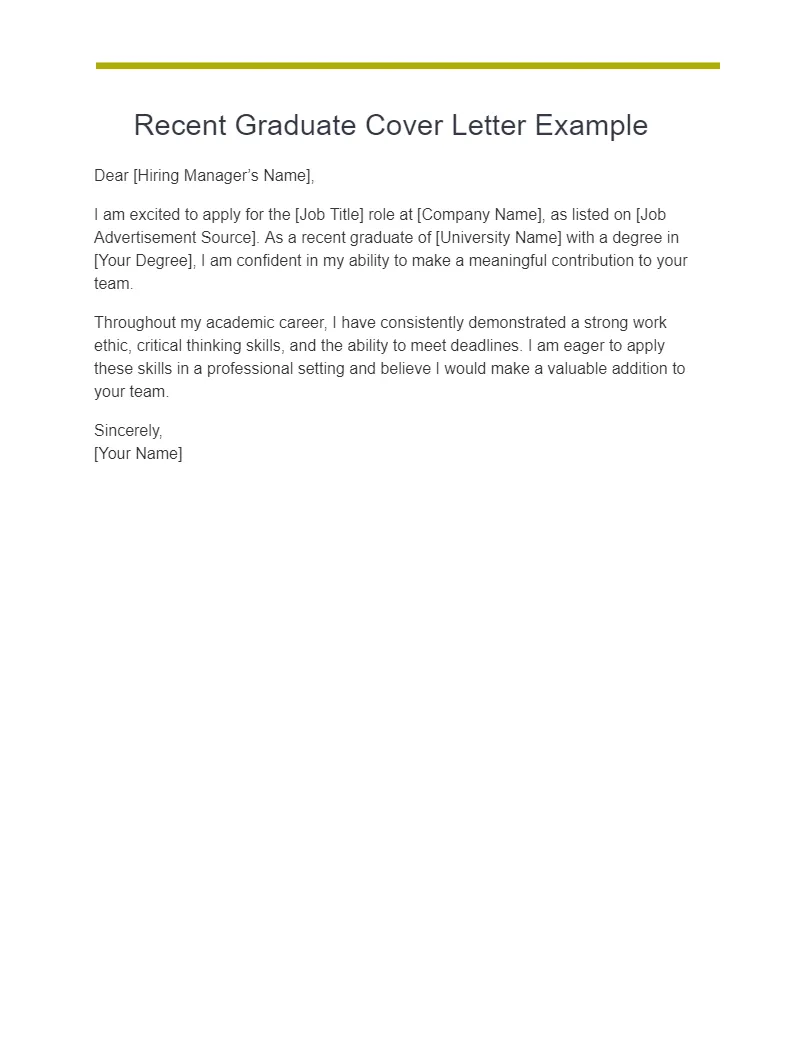
Proofread your cover letter multiple times, checking for typos, grammatical errors, and inconsistencies. Use a spell checker and grammar checker, but don’t rely on them completely. Read your letter aloud to catch any awkward phrasing or sentences. Ask a friend, family member, or career advisor to review your letter for feedback. Pay attention to the flow and clarity of your writing. Ensure your cover letter is free of clichés and jargon. A thorough proofreading process eliminates errors and enhances the overall quality of your cover letter, leaving a positive impression on the hiring manager.
Common Mistakes to Avoid in Your Graduate Cover Letter
Generic and Unfocused Content
Avoid using a generic cover letter that you send to every job application. Tailor your letter to the specific job and company. Highlight the skills and experiences that are most relevant to the position. Ensure your letter is focused and concise, clearly stating your interest and qualifications. A generic cover letter shows a lack of effort and interest, which can lead to your application being rejected. Tailoring demonstrates that you have taken the time to research the role and understand the requirements. Customize your cover letter to stand out.
Typos, Grammatical Errors, and Poor Formatting
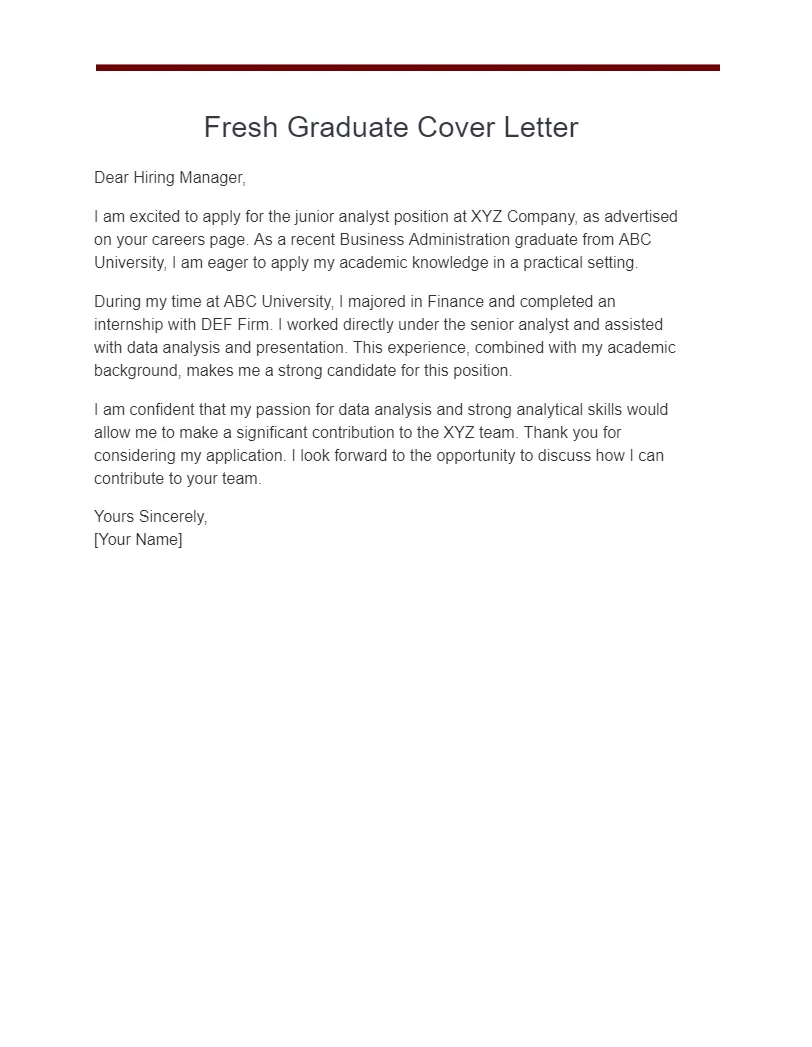
Typos, grammatical errors, and poor formatting can make a negative impression on hiring managers. Always proofread your cover letter multiple times and use spell-checking and grammar-checking tools. Ensure your formatting is consistent, with a clean font, proper spacing, and clear headings. A well-formatted and error-free cover letter demonstrates attention to detail and professionalism. Poorly written letters create an impression of carelessness and lack of professionalism. Always take the time to check and correct any errors before submitting your application.
Not Tailoring the Letter to the Job
Failing to tailor your cover letter to the specific job is a common mistake. Review the job description carefully and highlight the skills and experiences that match the requirements. Use keywords from the job description and demonstrate how your qualifications align with the role. A generic cover letter indicates a lack of interest and research. Tailoring your cover letter shows that you understand the job and are genuinely interested. Always make sure your cover letter reflects the requirements of the specific position.
Failing to Highlight Relevant Skills
Make sure you highlight your relevant skills and experiences. Focus on the qualifications that match the job requirements and provide examples of how you’ve used those skills in the past. Showcase your achievements, quantify your results whenever possible, and use action verbs to describe your responsibilities. Failing to highlight relevant skills can lead to your application being overlooked. Highlighting relevant skills increases your chances of making a strong impression and demonstrating that you are a qualified candidate.
Showcase Your Achievements
A well-crafted cover letter is a powerful tool for graduates seeking employment. By following these guidelines, you can create a cover letter that effectively showcases your skills, experiences, and enthusiasm, and ultimately lands you your dream job. Remember to tailor your letter to each specific job, highlight your achievements, and always proofread carefully. Good luck with your job search! The cover letter is your chance to tell a compelling story about your potential.
